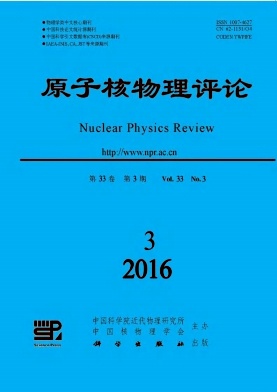|
[1]
|
FENG Zhenyong,WANG Shunjin.Nuclear Physics Review,2001,18(3):138.(in Chinese)(冯振勇,王顺金.原子核物理评论,2001,18(3):138.) |
|
[2]
|
MARSH NIGEL D,SVENSMARK HENRIK.Physical Review Letters,2000,85:5004. |
|
[3]
|
SVENSMARK HENRIK,ENGHOFF MARTIN B.PEDERSEN Jens Olaf Pepke,Physics Letters A,2013,377:2343. |
|
[4]
|
DAYANANDA MATHES,ZHANG Xiaohang,BUTLER CAROLA,et al.arXiv:1303.7191 |
|
[5]
|
SVENSMARK HENRIK.Physical Review Letters,1998,81:5027. |
|
[6]
|
JIA Huanyu.Nuclear Physics Review,2004,21(3):218.(in Chinese)(贾焕玉.原子核物理评论,2004,21(3):218.) |
|
[7]
|
SCHWARZSCHILD BERTRAM.Physics Today,2007,60(10):18. |
|
[8]
|
PATRIGNANI C,AGASHE K,AIELLI G,et al.(Particle Data Group),Chin Phys C,2016,40:100001. |
|
[9]
|
ABRAHAM J,ABREU P,AGLIETTA M,et al.(The Pierre Auger Collaboration),Science,2007,318:938. |
|
[10]
|
HAND ERIC.Nature,2010,463:1011. |
|
[11]
|
WU Chong,ZHANG Qiang,SUN Zhijia,et al.Nuclear Physics Review,2012,29(2):173.(in Chinese)(吴冲,张强,孙志嘉,等.原子核物理评论,2012,29(2):173.) |
|
[12]
|
Available on the web https://cosmicrays.oulu.fi/ |
|
[13]
|
LIN Jengwei,CHEN Yenfu,SHEU Rongjiun,et al.Nucl In-str and Meth A,2010,619:24. |
|
[14]
|
KEMPA J.BRANCUS I M.Nuclear Physics B,(Proc.Suppl.),2003,122:279. |
|
[15]
|
WANG Dianrong,WANG Xianpei,LI Chengze,et al.High Energy Physics and Nuclear Physics,1983,7(2):135.(in Chinese)(王殿荣,王先佩,李成泽,等.高能物理与核物理,1983,7(2):135.) |






 甘公网安备 62010202000723号
甘公网安备 62010202000723号 DownLoad:
DownLoad: